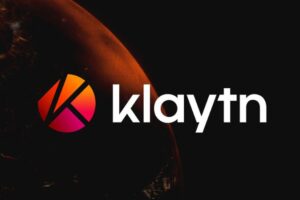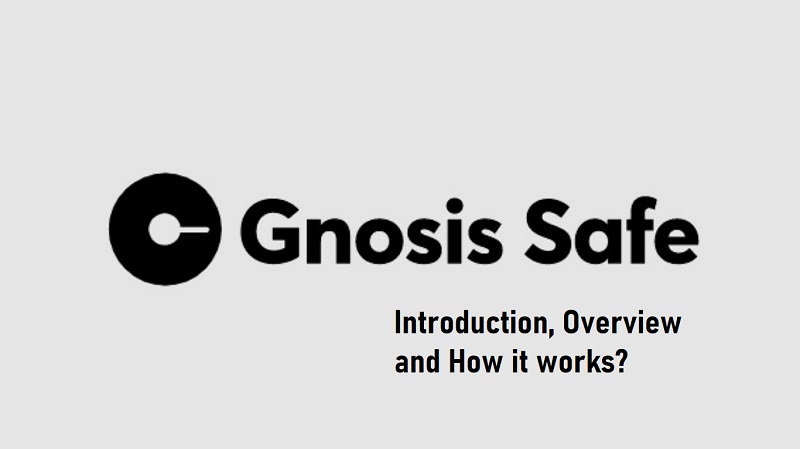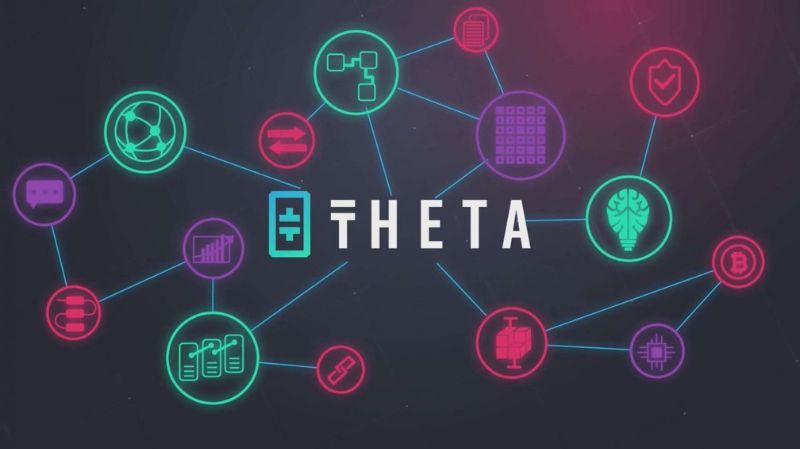Most Ethereum users are accustomed to a single key wallet, also known as an externally owned account (EOA). These accounts are protected by a private key and the funds can be thieved if that private key is compromised in any way.
Externally owned accounts are not a reliable way to handle your crypto business’s funds if your company has more than one person. The funds are lost forever if an employee gets into trouble or is careless with the private key. . So, what is the good option?
Enter the Multisignature. Gnosis Safe is an Ethereum-based smart contract wallet that requires a minimum number of people to approve a transaction before it can take place. If you have three main stakeholders in your business, for example, you can configure the wallet to require approval from all three people before the transaction is sent. This ensures that no single person can jeopardize the funds.
Furthermore, Gnosis Safe provides greater control over your funds. There is no risk of a bank harassing you for running a cryptocurrency business, and the smart contract that is deployed is completely trustworthy and under your control.
Here’s an overview of the Gnosis Safe in comparison to other digital assets.
Page Contents
Introduction
In 2016, Gnosis developed a ticketing system in preparation for its token sale. Gnosis wanted to create something that allows users to securely store funds in Ethereum and requires multiple signatures to authenticate transactions for added security. Gnosis MultiSig was created in response to these necessities. With over 2500 instances implemented; this multi-signature bill became the standard for collectively managing cryptographic funds. Gnosis’ primary focus remains prediction markets. Tokens that predict market outcomes can be extremely valuable. Therefore, users require a secure location to store them. For collecting and manipulating these tokens, smart contract wallets, particularly multi-signature wallets, are perfect.
As the ecosystem matured and gas costs became an essential aspect to consider when developing an app, the Gnosis MultiSig smart contract was redesigned from the ground up to meet the following requirements:
- Gnosis was able to save gas by using off-chain signatures instead of on-chain confirmations.
- Advancements using proxy contracts are possible.
- Representative calls enable you to extend your base contracts.
Gnosis’s secure features
Transaction multi-factor authentication: Most wallets only require one signature from a single key to execute transactions. This is simply a less secure method of storing your money. Each transaction with the Gnosis Safe must be agreed to sign by the mobile app and a secondary device This indicates that no one else, even if they steal your private key, will ever have access to your funds!
Improved dApp integration and interaction: EOA-based wallets frequently require the user to sign multiple transactions to perform a single action. We eliminate repetitive transaction confirmation steps by bundling transactions! Depending on the use case, we could also enable interaction with apps until a specific spending limit is reached, or remove the need for more than one signature.
Modern recovery methodologies: Most wallets rely solely on a backup of the recovery phrase. This phrase is similar to the private key in that it grants complete control over the account. It is not possible to change a recovery phrase once it has been revealed to the account creator. The Safe’s smart contract logic enables us to implement any type of recovery mechanism, including traditional recovery phrases that can be replaced or disabled at any time, social or time-lock recovery, and recovery via KYC providers. We’re still researching which offset the effects will be the most secure and usable to implement.
Gnosis intends to provide an open-source infrastructure for Ethereum-based prediction markets. A prediction market is a type of marketplace similar to exchange, except instead of trading assets, users trade the course of events Despite being frequently restricted by regulators, it is believed that cryptocurrencies have the potential to decentralize the operation of prediction markets, allowing them to be accessed globally.
This is the concept behind the Gnosis prediction market platform, a blockchain that allows users to trade cryptocurrencies that represent event results on an open market. Gnosis tokens gain or lose value as events unfold and outcomes become clear, depending on what the user predicted.
Gnosis aims to create an infra for many decentralized applications that can serve as prediction models, sources of information, and standards for forecasting assets in this market. Gnosis contends that by allowing any party to access its platform and aggregating public opinion in an uncensored source, it can create a reliable forecasting tool with applications for decision-makers in finance, government, and insurance, among other sectors.
The Gnosis software employs two cryptocurrencies, GNO and OWL, which aid in the reliability and distribution of its transactions. Today, Gnosis is making progress toward its lofty goals, but it is far from alone, with market competitors such as Augur (REP).
Founders of Gnosis
Martin Koppelmann and Stefan George founded Gnosis in 2015 as part of ConsenSys, an Ethereum venture production studio. Gnosis was able to secure funding and become an independent company based in Gibraltar in April 2017. Gnosis currently employs over 50 people worldwide and has a main development hub in Berlin at the Full Node co-working space.
For its ICO, Gnosis used a reverse Dutch auction. The sale was restricted to 12.5 million USD. Due to the sale’s structure, where the majority of the tokens would go to the Gnosis team based on a sliding scale that varied based on how long the sale took, only 5% of the tokens were released to buyers. The Gnosis team received over 90% of the pre-sale supply because buyers, fearing they would miss out, bought a whole 12.5 million USD supply within 3 hours. The team decided to lock the tokens for one year after the unexpected demand of the pre-sale to relieve buyer concerns about the team divesting their holdings.
How is Gnosis (GNO) kept safe?
The Gnosis platform makes use of a set of Ethereum-based smart contracts. Because smart contracts are hosted on the Ethereum network, the base security is also handled by the nodes and miners who use Proof-of-Work to keep the Ethereum network secure. The Gnosis platform performs regular audits to ensure that the code in their smart contracts is current, secure, and compliant with the Ethereum framework. Gnosis also has a public bug bounty program in which they award up to $100,000 for every reported bug.
What is the purpose of Gnosis Safe?
To create a multi-sig wallet in Ethereum, you must first create a smart contract that allows you to manage funds and requires multiple signatures to spend these funds. All of these parameters can, of course, be configured, sent, and executed if you know how to program in Solidity. But, unfortunately, the majority of us don’t know how to do it. As a result, Gnosis Safe provides a platform with an easy-to-use user interface where you can create, launch, and run your Ethereum smart contract destined to be a multisig wallet.
In a single transaction worth more than $1.7 billion, Gnosis Safe received 1,500,000 ETH. This increased its balance to $2.3 billion in April 2021. Gnosis Safe is a fund management platform built on Ethereum. This platform has a decentralized application for creating multisig wallets on the Ethereum network. It’s also found in parallel networks like DxO.
Allow third parties to submit transactions, also known as “meta transactions” in the industry. It supports “out-of-gas” transactions in which the wallet or app pays the transaction fees to reduce friction during use. Users can also pay transaction fees in ERC20 tokens, eliminating the need to maintain ETH in their wallets at all times.
Interaction with other contracts has been streamlined: several apps now require users to sign multiple blockchain transactions in a row to complete a single trading action. Smart contract wallets can bundle delegated calls together because of their power, requiring the user to sign only one transaction.
How Does Gnosis (GNO) Work?
Gnosis provides three main products for GNO users, and these products use three separate layers to provide a proper experience for users. The Gnosis Core Layer provides the Gnosis platform’s foundational smart contracts. The Gnosis Service Layer provides resources for consumer applications, such as chatbots and stable coins. Finally, there is the Gnosis Applications Layer, which consists primarily of front-end tools that target specific prediction markets or customer segments. Some of the applications are created by Gnosis, while others are created by third parties.
Gnosis’ prediction market enables users to create a market for any arbitrary event in which users can buy and sell positions to speculate on the outcome. As time passes or related events occur, certain outcomes become more likely, increasing the value of the related tokens. When the event is over, the tokens representing the outcome receive the full value of the bets, while the remaining tokens representing the other outcomes become worthless.
What benefits does Gnosis Safe provide to its users?
Gnosis Safe adoption by new users is increasing, with over USD 44 billion in Safes kept and over 26,000 established to date. Because there were more users and important transactions than ever before, Gnosis Safe made it a point to respond to requests for critical Layer 2 characteristics such as low transaction prices and efficient throughput. It intends to continue supporting the growing sector of Defi treasuries, which currently store USD 55 billion TVL, DAOs managing $838 million assets, and a diverse range of investors, institutions, projects, teams, and people by enabling interoperability with major network L2s.
By making the platform available across chains, Gnosis Safe hopes to catalyze a feedback cycle of acceptance and scaling apps available on various networks.
By making the platform available across chains, Gnosis Safe hopes to catalyze a feedback cycle of acceptance and scaling apps available on various networks. Launching on each chain requires establishing a chain-specific Safe App browser for projects that convert their app to a Safe App. Polygon, BSC, and xDai, for example, have thriving ecosystems of native and cross-chain dapps
Is Gnosis Safe reliable to use?
Gnosis safe appears to be a platform that provides trust to its users and investors, as it offers several features that provide a sense of security when carrying out activities on it, such as:
Allow third parties to complete transactions: this is known in the industry as “meta transactions.” It allows for “out-of-gas” transactions, in which the wallet or app pays the transaction fees to reduce friction during use. Users may also pay transaction fees in ERC20 tokens, which eliminates the need for them to keep ETH in their wallets at all times.
Interaction with other contracts has been streamlined: several apps now require users to sign multiple blockchain transactions in a row to finish a single trading action. Smart contract wallets can bundle assigned calls together because of their power, requiring the user to sign only one transaction.











